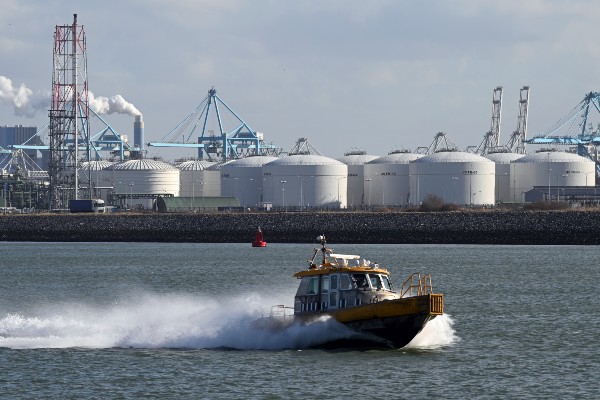Analyytikkomme ovat laskeneet öljyn hintaennusteensa 75 dollariin barrelista aiemman sadan dollarin sijaan. Lue lisää täältä.
Emma Wall: Hello, and welcome to Morningstar. I'm Emma Wall and I'm joined today by Allen Good, Senior Equity Analyst for Morningstar.
Hi, Allen.
Allen Good: Hello, how are you today?
Wall: Very well. Thank you. Oil; big topic, very popular subject; you just given your talk at the Morningstar Investment Conference, Europe. Morningstar analysts have recently downgraded the oil price forecast. What price are we looking at now?
Good: So previously we were using $100 per barrel oil, now we're using $75. And the basic reason behind that is because we think the potential of U.S. tight oil; its size, amount production and then ultimately its cost means that we can meet a lot of supply without having higher prices.
So, if we look at U.S. tight oil, most of it is viable below $60 per barrel. And its – the size of the resource is also much larger than we previously thought. So by 2020, we think we need about 6 million barrels per day; 40% of that can be met by tight oil and the remainder could be met by supplies under $75. So, ultimately, we don't think you need $100 per barrel oil anymore to meet global supply.
Wall: So this isn't so much about the fact that we've seen the Brent crude come down from $110 to $55 again this week following Janet Yellen's speech. It's more to do with forward-looking supply and demand?
Good: Absolutely. I would say the one key change that we've seen in the past year is OpEx unwillingness to step in and cut supply in front of the market. And so they were losing market share to the U.S. and as opposed to cutting supplies, increasing prices and effectively subsidising U.S. they decided to let the oil market really be a market.
And as a result, you don't necessarily have that price forward that we historically have. So at the end of the day all comes down to supply and demand and cost of supply. And the fact is that cost of supply is a lot cheaper than it used to be.
Wall: So looking then at equities, you are an equity analyst. Obviously, oil price is going to have a big impact on oil stocks, it's going to affect the fair value estimate and the economic moat as well. I mean, how are these stocks faring now?
Good: So, stocks actually and collectively haven't fared all that poorly. Oil prices are down about 50%, but if you look at couple of the indexes they are only down 25%. Now, granted if you are a smaller player and you produce 100% oil you are likely to be down 60% or 70%.
So we do think there is opportunity, even if you assume oil long-term at $75. Our preference is always for quality and valuation. So we like firms that have low cost assets that can generate excess returns or in our words – in Morningstar words, have economic moat and even have an economic moat at $75.
Now, granted not as many firms have economic moat at $75 oil, as it did at $100. So we have reduced moat ratings for several of our E&P names and several of our integrated names, particularly the European major integrated oils: Shell (RSDB), BP (BP.), Total (FP) no longer have moats in our opinion.
So what we are looking for are moaty names that are undervalued. And when you look across that screen; on the integrated side, we do see Exxon (XOM) as a viable candidate; on the services side, we see Core Labs or Schlumberger; and then on E&P side, we still think BG (BG.) earns a narrow moat and even Tullow Oil (TLW) which had some difficulties still has low cost resource that is undervalued by the market.
Wall: And why, in particular, have those European names been hit more than the U.S. names, is it just because we don't have sources shale oil and gas in Europe?
Good: I think that's part of it. I mean I think if you look at the larger tight oil players with the better quality position those shares have held up better. But also if you look at individual names, they all have their issues; Tullow has a relatively high debt level, but we think it is manageable. BG has had some execution issues. If you look at some of the European majors they have European refining which has been challenged as well.
So every company typically is going to perform differently in the oil price environment. Yes, they are all impacted but balance sheet, asset quality, company-specific issues are going to determine share price performance as well.
Wall: And then quickly on the flip side of that. Who is still too overvalued would you consider given the backdrop and has lost its moat entirely?
Good: Yeah, so I mean we don't think there is a lot of firms out there that are very overvalued at these levels. We just think there is less opportunity. But if you look again at Total, as I mentioned earlier, there are firm that we think are slightly overvalued that have no moat. A lot of the drillers like a Seadrill who are heavily levered offshore activity which again falls in the higher end of the cost curve, these firms have a lot of debt and there is an oversupply of offshore rigs. So those firms not only have no competitive advantage, in our opinion, but also are overvalued as well.
Wall: Allen, thank you very much.
Good: Absolutely. Thank you.
Wall: This is Emma Wall for Morningstar. Thank you for watching.



















